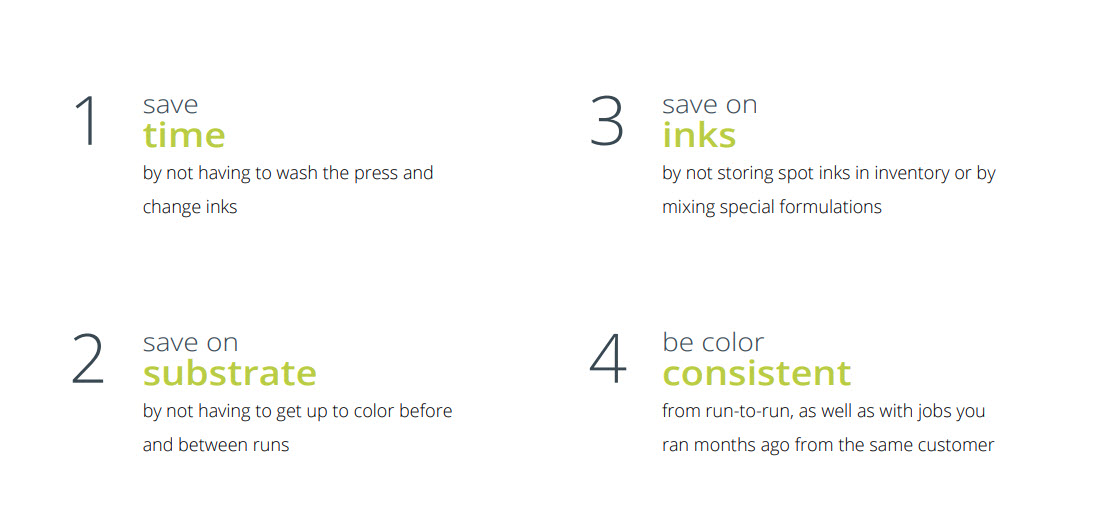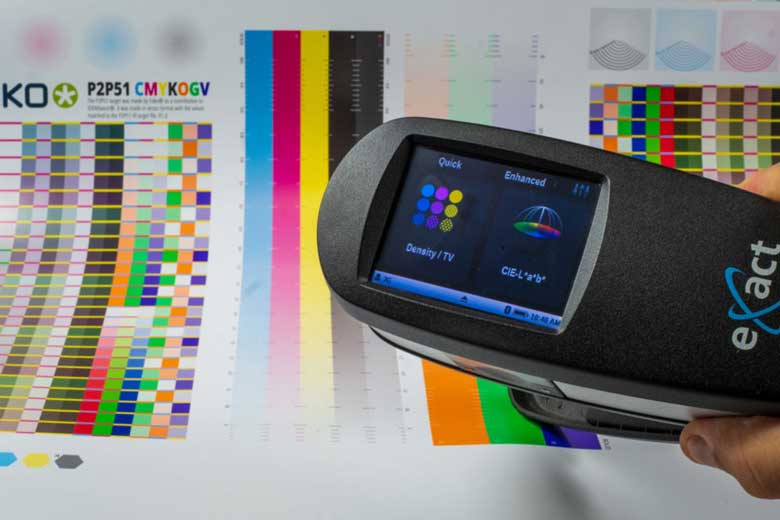Learn how expanded gamut technology raises your productivity and makes printing more profitable.
A lot of companies are still not sure whether fixed palette printing is a good idea. This document demystifies several common recurring beliefs about extended gamut technology that keep printing companies from reaching their full potential.
What is Extended Gamut Printing?
The four-color process (CMYK) is capable of producing a limited range of colors. Spot colors have traditionally been used to achieve colors outside the CMYK gamut.
However, printing with spot colors is not cost-effective. It requires mixing custom inks, cleaning and prepping the press decks for each job, and makes it hard to run print jobs in combo.
Adding extra colors to the cyan, magenta, yellow and black expands the gamut and reduces the need for custom spot colors.
Typically, extra colors would be orange or red, green, and violet or blue. The press can then use the same set of inks for every job, resulting in important cost savings in the press room. Additionally, images are more colorful and closer to the original.
The Benefits of Extended Gamut Printing
- substantially shorter press set-up time
- reduced costs of printed waste and inks
- more press up-time

Want to learn more about Extended Gamut Printing? Download this Expanded Gamut Printing resource that debunks the most common myths about expanded gamut printing or contact us.

